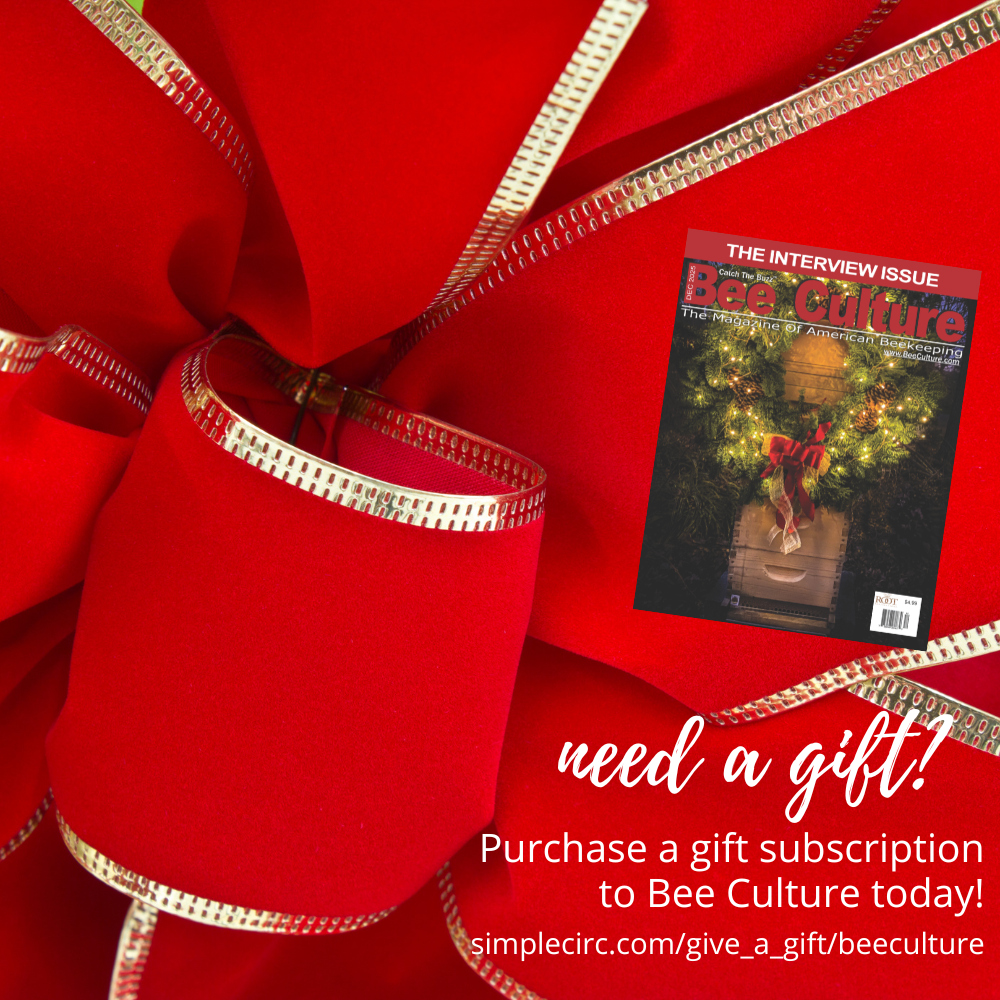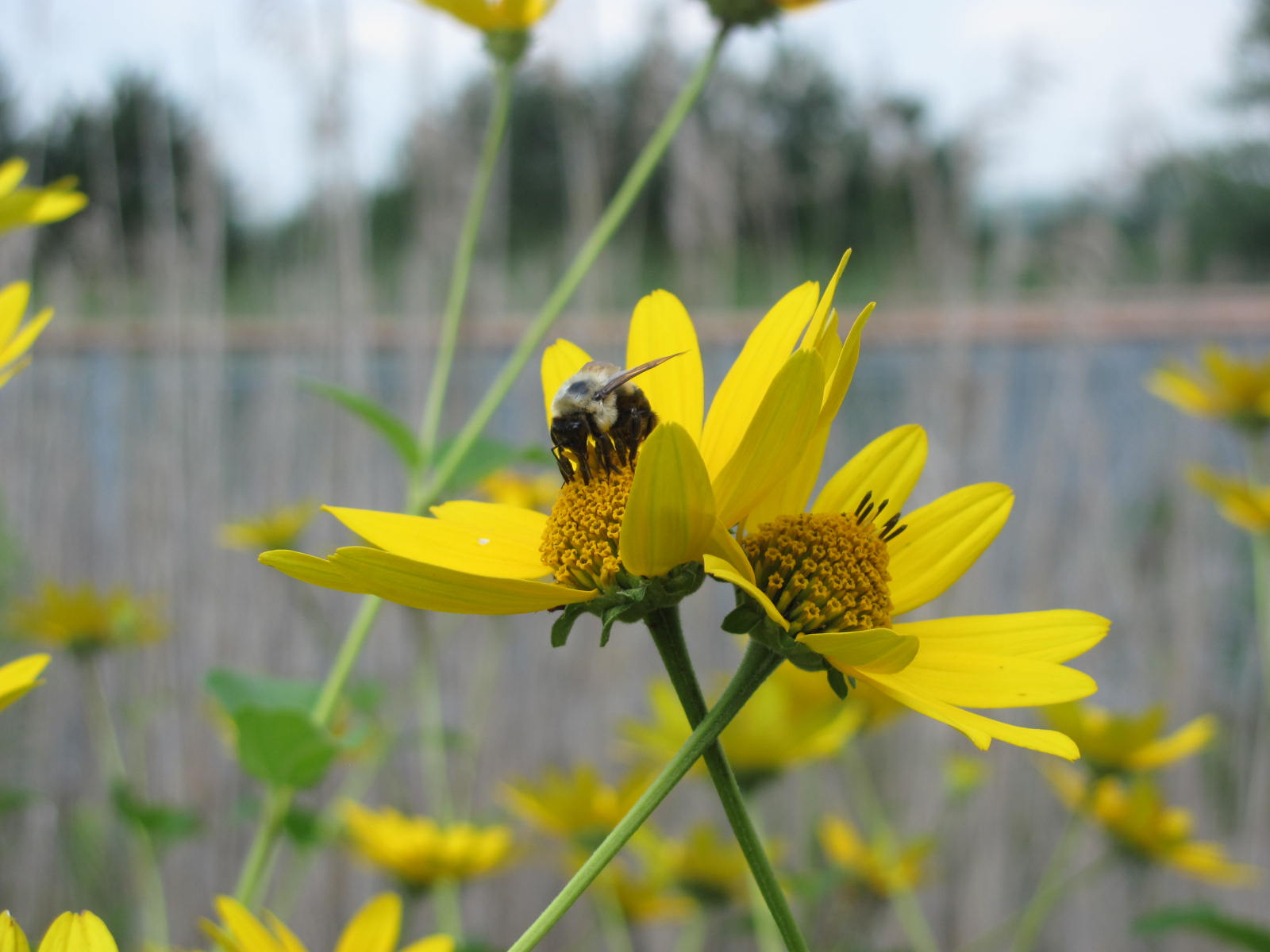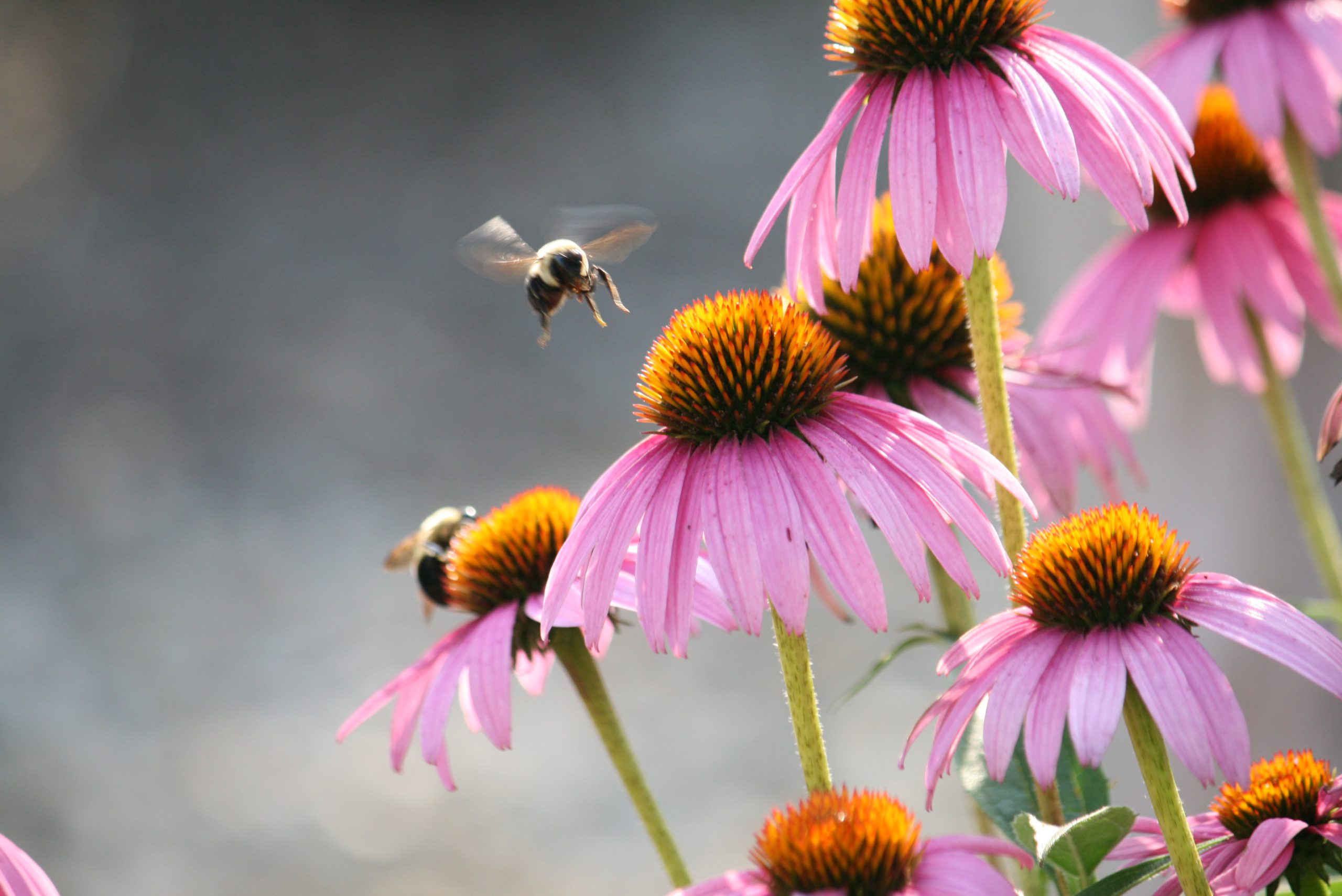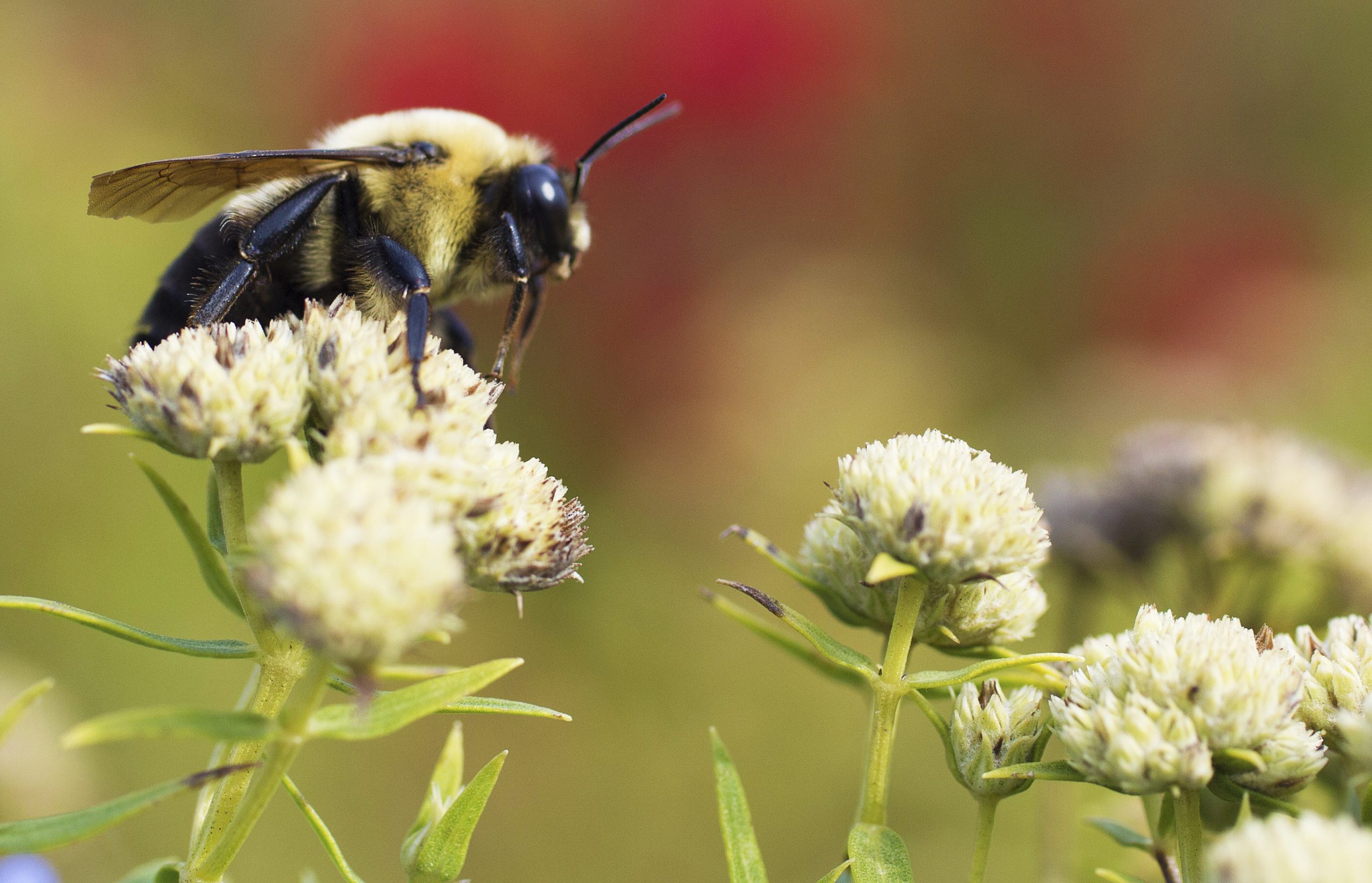Sienna Malik
Beekeepers needn’t be told about the importance of bees as pollinators, or about the threats to the global economy and food security associated with a drop in domesticated honey bee numbers. Less discussed, but equally important, are the threats posed by a decline in wild, native bees. A 2021 review of population data suggested that, since the 1990s, native bee species richness may have decreased by 25% worldwide because of factors such as habitat loss and pesticide use. Reversing this loss is critical to preserving overall biodiversity and will require a concerted effort to replenish and protect their habitats, with an emphasis on planting wildflowers and other native blooming plants.
Wildlife Habitat Council (WHC) has operated at the intersection of business and biodiversity for three decades, supporting and certifying conservation work on corporate lands. Given the ubiquity of bees and relative ease of creating pollinator habitat, many WHC-certified programs address the needs of native bees. Here are five of the many ways that WHC member companies are contributing to the conservation of bees and other native pollinators — and what you can do in your backyard, at your workplace or around your beehive:
- Supporting Honey bees in Their Native Range – Honey bees are native to Eurasia and Africa, where in the wild they typically build hives in hollow trees and pollinate a wide range of flowers in search for food. The body of research on wild honey bees in their native range is markedly smaller than that of their domesticated counterparts (leading to the IUCN listing them as “Data Deficient” on the Red List). The studies that have been done, however, suggest that wild honey bees are threatened by the challenges all bees face, as well as hybridization with domesticated and feral subspecies, which have been bred for human utility rather than survival in the wild.
To support honey bees and other pollinators native to Central Asia, employees at the General Motors (GM) facility in Tashkent, Uzbekistan have planted an apple orchard on their property. Apple trees, which are believed to have originated in the region, are especially attractive to honey bees because of their easily detectable nectar and pollen. To ensure that the bees have access to food after Spring apple blossom season, GM has also planted flowers such as meadowsweet and guelder-rose. Many pollinators, primarily honey bees, in the orchard and natural honeycomb, have been observed throughout the site. With this increased presence in pollinators, it has been noted that the apple trees are producing more fruit, indicating that this conservation work has facilitated a mutually beneficial relationship between on-site flora and fauna.
What you can do: With help from guidebooks, local conservation groups and/or an agricultural extension, research native bees in your area and their preferred foods, and create a pollinator habitat. Whether a small pot planted with native seeds on an apartment balcony, or a vast meadowland of wildflowers, native plantings provide critical resources for pollinators in decline.
- Supporting Pollinator Diversity – As the world faces unprecedented drops in many pollinator populations, it has become increasingly important to promote pollinator redundancy. Planting a wide range of native plants, whose flowers have different shapes, sizes, colors and bloom times, can attract a diversity of pollinator species (including not only bees, but also butterflies, moths, beetles and hummingbirds), helping to ensure local resiliency should a species disappear from the area.Michigan-based utility company DTE Energy operates the Washington 10 Compressor Station, 40 miles north of Detroit. Employees transformed a turfgrass area into a thriving wildflower prairie and landscaped pollinator garden that provide habitat for a diverse array of native pollinators, including endangered butterflies like the karner blue, regal fritillary and powesheik skipperling, as well as a variety of bees, moths and beetles. By planting vegetation for both specialist species (e.g., milkweed for monarch butterflies) and generalists (e.g., black-eyed Susan, coreopsis, blazing star), the team has been able to increase on-site pollinator diversity, attracting a wide range of solitary bees among other beneficial insects. What you can do: Research and plant a range of native plants that will attract a variety of species. Beetles, for instance, are attracted to sturdy, bowl-shaped flowers that produce a lot of pollen, whereas moths are attracted to light-colored blooms that open around dusk.
- Contributing to Research – Across the world, research on honey bees as livestock has largely outpaced research on native bees, making it difficult to gauge population stability or distribution. Collecting more data on native bees will make it easier to track native bee loss or recovery and will allow bee advocates to make a stronger case for the conservation of at-risk species. The research that is done on native bees is not evenly distributed — the amount of data collected on native bees in northeast Mexico, for instance, has been markedly lower than that collected in bordering regions of Mexico or in the neighboring U.S. state of Texas. Covia, a multinational provider of minerals and material solutions for the industrial and energy markets, supports researchers in this part of Mexico at its Planta Lampazos facility in Nuevo León. Employees have collaborated with local biologists to manage 17 acres of desert habitat for bees and have collected monitoring data since 2018. So far, 77 different bee species have been counted on-site, a record number for the region. What you can do: Report native bee sightings to a citizen science project like Bumble Bee Watch or iNaturalist’s Native Bees of North America project. These initiatives allow researchers to understand and track the population distribution of bees and to identify high-risk species.
- Providing Shelter – While bees native to North America don’t live in hives, they still need proper shelter to raise their young. Most bees on the continent are solitary species that nest underground, burrowing under bare, loose soil to create their shelters. Others are cavity-nesters that lay eggs in deadwood or hollow stems. Both types are threatened by habitat loss, as urbanization has resulted in more impervious surfaces, soil compaction and a tendency to remove dead trees from our properties. Providing native bees with nesting habitat can be as easy as leaving bare ground available for them or purchasing or constructing a simple bee block (a structure filled with reeds or a wood block with holes drilled in it to replicate the cavities found in nature). Global pharmaceutical manufacturer Bayer manages the Muscatine Plant and Big Sand Mount Nature Preserve in eastern Iowa. The site features a one acre pollinator garden adjacent to a 40-acre prairie, both of which contain native wildflowers. In addition to this food source, both beehives and bee blocks have been installed on-site as part of local youth initiatives. Monitoring indicated that bees moved into the blocks within months, and a wide range of bee species have been seen around the site. What you can do: Consider the ways your yard or workplace can provide nesting habitat for native bees. The U.S. Forest Service website describes methods for making a simple nesting structure. If you have patches of bare soil around your yard, avoid standing or walking on it, or construct a path so that any soil compaction is concentrated in one area.
- Spreading the Word – Many companies have committed to not only planting their own pollinator gardens, but also to involving community members in these efforts. By organizing planting events that are open to the public, hosting in-person or virtual educational events, or posting informative signs in the gardens, companies can turn site-level projects into collective action, empowering employees and the greater community to address biodiversity loss while also contributing to company community relations goals.
Waste Management (WM), a North American provider of integrated environmental solutions, operates a landfill in Bucks County, Pennsylvania, north of Philadelphia. The site features a 17,000-square-foot wildflower meadow and a nearly 5,000-square-foot demonstration garden whose flowers provide nectar and pollen for both native bees and honey bees living in four nearby hives. These habitats serve as the backdrop for a pollinator education initiative that reaches about 700 community members per year. From training citizen scientists, to hosting insect hotel workshops, to conducting group planting sessions, the WM team has engaged participants of all ages in hands-on conservation work. The experiences have inspired many attendees to start gardens in their own homes, increasing the amount of habitat available to local pollinators.
What you can do: If your knowledge on native pollinators is limited, seek out and attend community events (or virtual ones with relevance to your region). WHC hosts a pollinator-themed webinar each June in observance of Pollinator Week, a yearly celebration in support of pollinator health. Visit the Pollinator Partnership website for a list of aligned virtual and in-person events related to Pollinator Week. In addition, a local conservation group, extension office or municipal office may be able to tell you about events happening year-round.
If you already have a good understanding of native pollinator’s needs, share your knowledge with family, friends and colleagues or consider participating in a Master Gardener program that will teach you to you train others in your community on supporting pollinators.
Given the critical role native bees and other pollinators play in global biodiversity and our economic systems, immediate and widespread action is needed. Luckily, there are many ways that anyone can contribute to pollinator recovery. To learn more about companies that have started successful pollinator conservation projects, or for inspiration on starting a pollinator garden in your yard or at your workplace, visit https://www.wildlifehc.org/pollinators.














